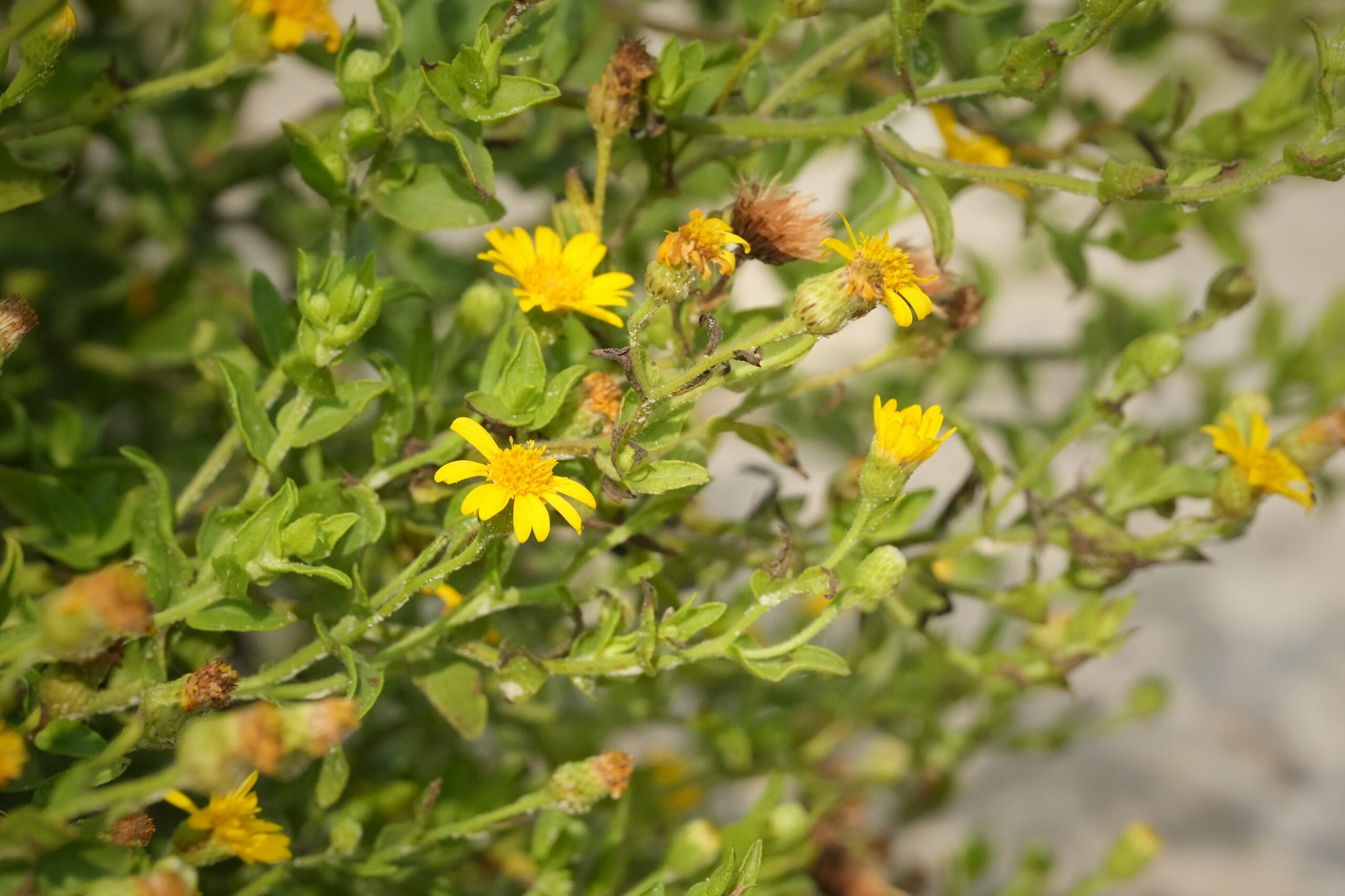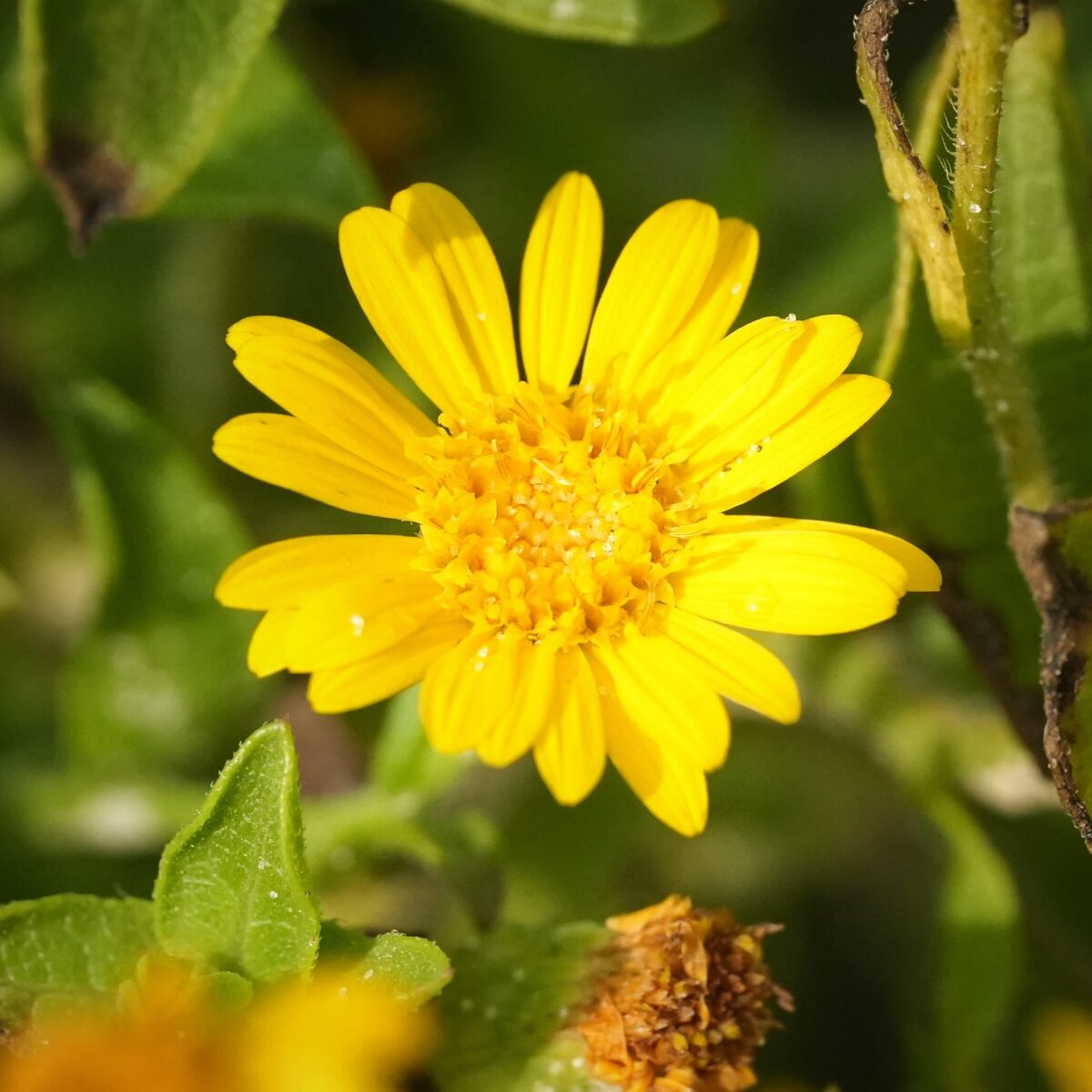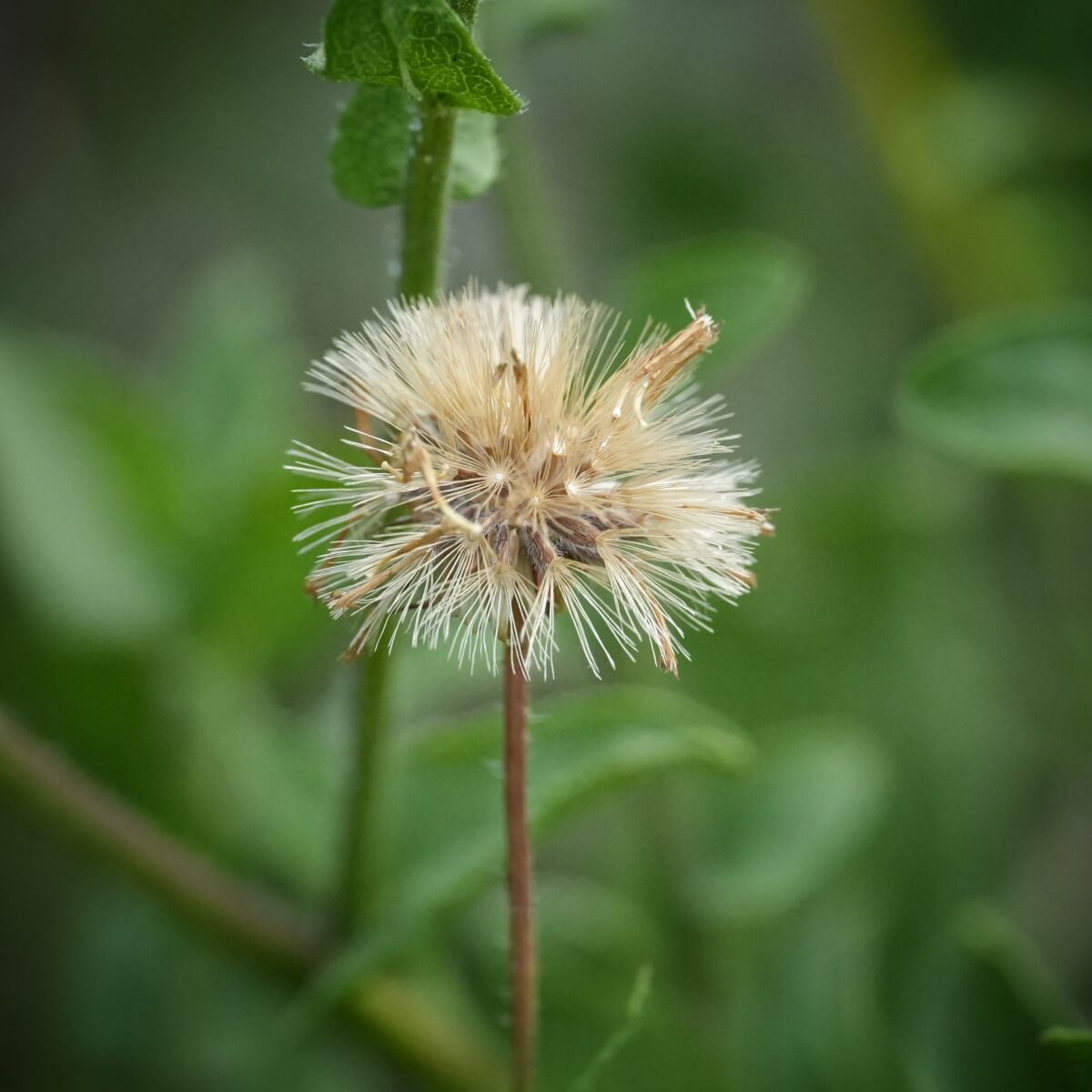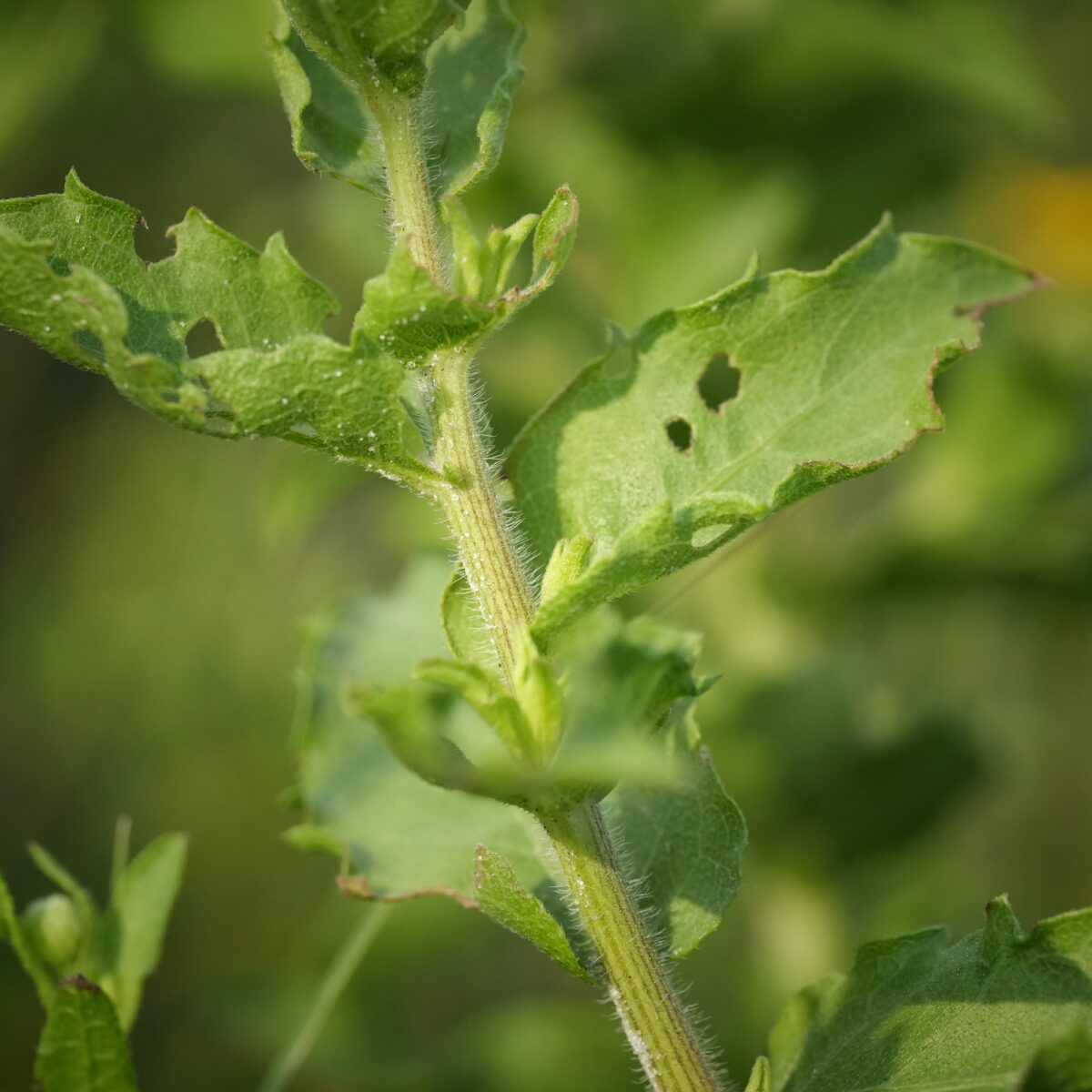Camphorweed
Pictured above: Camphorweed (Heterotheca subaxillaris) by Emily Bell. Click on terms for botanical definitions. View post as a PDF.
Camphorweed is an aromatic, annual to biennial herbaceous shrub. Its copious blooms consist of bright yellow ray florets and vivid yellow to orange disk florets. Leaves are elliptic to lanceolate and alternately arranged with toothed margins. Leaves and stems are covered in bristly hairs and are sticky to the touch.
Camphorweed typically blooms in summer and fall, although in certain conditions it may bloom year-round. In spring, it appears as a basal rosette of rough, almost sagittate leaves from which the flower stalk emerges. It occurs naturally on coastal dunes and grasslands, in scrubs, pinelands and ruderal areas. It is attractive to many bees and butterflies.
As the common name suggests, camphorweed has a camphor-like aroma (or odor, as some might suggest), particularly when the leaves are disturbed.
Family: Asteraceae (Aster or daisy family)
Native range: Nearly throughout Florida
To see where natural populations of camphorweed have been vouchered, visit www.florida.plantatlas.usf.edu.
Lifespan: Annual
Soil: Dry, well-drained, sandy soils
Exposure: Full sun
Growth habit: Up to 3’+ tall with 10–20’+ spread
Propagation: Seed
Florida regions of landscape suitability: North, Central, South
Garden tips: Camphorweed is often overlooked as a desirable landscape plant, as it can become weedy in appearance and habit. It is, however, incredibly tolerant of varied and harsh conditions. It can be propagated by seeds, which should be collected when the flower heads appear brown and “fuzzy.” It readily self-sows.
Not typically cultivated but may volunteer itself into landscapes and is easily grown from seed.
Learn more about Camphorweed from the Institute for Regional Conservation.




